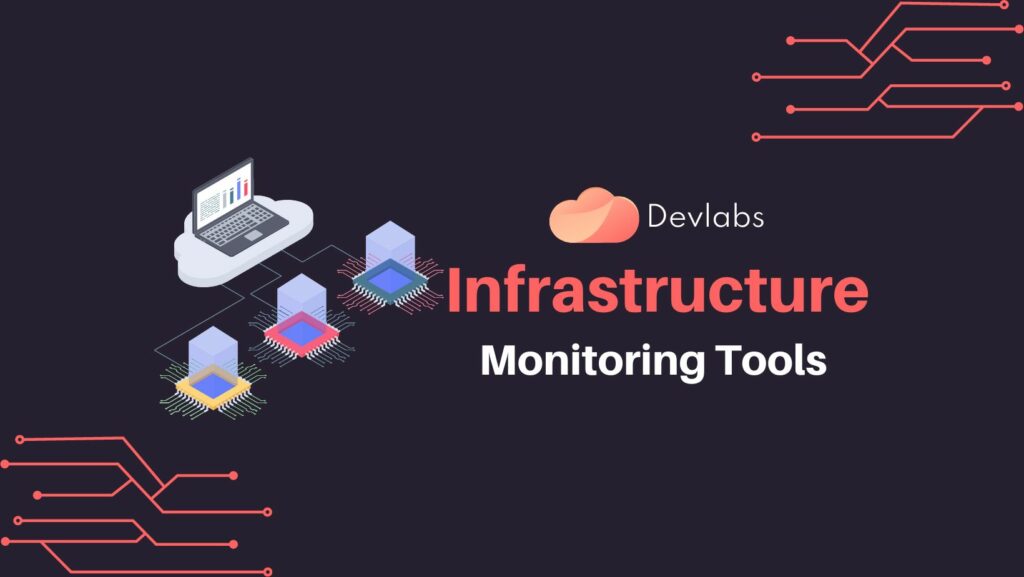Infrastructure monitoring refers to a set of practices, tools, and technologies used to monitor and manage the performance, availability, and health of an organization’s IT infrastructure. It involves the continuous monitoring of various components within an infrastructure, such as servers, networks, databases, applications, and other critical systems.
Benefits of Using Tools?
Infrastructure monitoring tools provide several benefits for organizations. Here are some key advantages:
- Proactive Issue Detection: Monitoring tools continuously track the health and performance of infrastructure components, such as servers, networks, databases, and applications. They can detect potential problems or anomalies before they escalate into critical issues.
- Enhanced Performance and Availability: By monitoring infrastructure in real-time, these tools enable organizations to optimize performance and ensure high availability.
- Efficient Troubleshooting and Root Cause Analysis: Infrastructure monitoring tools offer detailed visibility into the system’s components, their dependencies, and interconnections. When an issue arises, these tools can provide comprehensive data and metrics, facilitating efficient troubleshooting and faster resolution.
- Capacity Planning and Scalability: By monitoring resource usage and performance trends, infrastructure monitoring tools aid in capacity planning. Organizations can analyze historical data to forecast future demands accurately, allowing them to allocate resources optimally and scale infrastructure as needed.
- Security and Compliance: Monitoring tools play a crucial role in ensuring the security and compliance of infrastructure. They can track security events, monitor access controls, and generate audit logs for compliance requirements.
- Cost Optimization: Effective infrastructure monitoring can lead to cost savings. By identifying underutilized resources, organizations can optimize their infrastructure and reduce unnecessary expenses.
- Performance Benchmarking and SLA Management: Monitoring tools provide performance benchmarks and metrics to measure the system’s performance against service-level agreements (SLAs).
How Support IT Infrastructure Monitoring Tools
There is a wide range of tools and software available for IT monitoring, each with its own unique set of capabilities. Different types of tools are used for monitoring various aspects of infrastructure. Let’s look at some common categories:
- Network monitoring tools: These tools track the performance and availability of network devices and connections. They can notify administrators about issues like high network utilization, packet loss, and connectivity problems. For instance, if power or network outages are likely to occur frequently, these tools can help your team develop an effective response strategy.
- Server monitoring tools: These tools monitor the performance and availability of servers, including metrics like CPU usage, memory utilization, and disk space. They can also keep an eye on specific services and applications running on the servers. By automating tasks such as CPU and memory checks, your team can save time and focus on more advanced responsibilities.
- Application monitoring tools: These tools monitor the performance and availability of specific applications, such as web servers, databases, and email servers. They provide detailed insights into application-specific metrics like response times, error rates, and transaction volumes. This data enables your team to make informed decisions and improve efficiency.
- Cloud monitoring tools: These tools monitor the performance and availability of cloud-based infrastructure and services. They keep track of resource usage and cost, and alert administrators about potential issues such as over-utilization or under-utilization. These tools are particularly useful when you want to optimize physical bandwidth and transition more operations to the cloud consulting.
- Log monitoring tools: These tools collect, aggregate, and analyze log data from different systems and applications, offering a centralized view of the IT infrastructure monitoring tools. They can alert administrators about security breaches, system failures, and performance bottlenecks.
What Does Your Typical IT Infrastructure Monitoring Tools Offer?
A typical IT infrastructure monitoring tools offers a range of features and functionalities to ensure the smooth operation and optimal performance of an organization’s IT systems. Here are some common features you can expect from such a tool:
- Real-time Monitoring: The tool continuously monitors various components of the IT infrastructure monitoring tools, including servers, network devices, applications, databases, and more. It provides real-time insights into the health, availability, and performance of these components.
- Alerting and Notification: The monitoring tool detects anomalies, errors, or performance degradation and sends alerts or notifications to the appropriate personnel.
- Performance Metrics: It collects and analyzes performance metrics, such as CPU usage, memory utilization, network latency, disk I/O, and response times.
- Dashboards and Visualization: The tool typically offers a user-friendly interface with customizable dashboards and visualizations.
- Logs and Event Management: It centralizes and aggregates logs and events from different sources, making it easier to search, filter, and analyze them. This helps in troubleshooting, identifying root causes of issues, and ensuring compliance with security and auditing requirements.
- Capacity Planning: The monitoring tool often includes features for capacity planning and forecasting.
- Trend Analysis and Reporting: By analyzing historical data, the tool can provide trend analysis and generate comprehensive reports.
- Integration and Extensibility: Monitoring tools can integrate with other IT management systems, such as incident management, configuration management, or ticketing systems.
Contact us with how to choose the best IT infrastructure monitoring tools for your business. To speak with our expert in infrastructure monitoring, simply dial +1 832 290 9522, or share your contact details/requirements via email at info@devlabsglobal.com. Don’t forget to stay updated with intriguing managed IT services news by liking our Facebook page and following us on Twitter.
Also Read Related Blogs:
- A Comprehensive Guide to Choosing the Best Network Monitoring Software
- 5 Essential Things to Know About Your Cloud Network Monitoring
- The Importance of Infrastructure Monitoring Services – Ensuring Network and Cloud Performance
- Unlocking the Power of Cloud with Devlabs: Your Go-To Cloud Consulting Services


